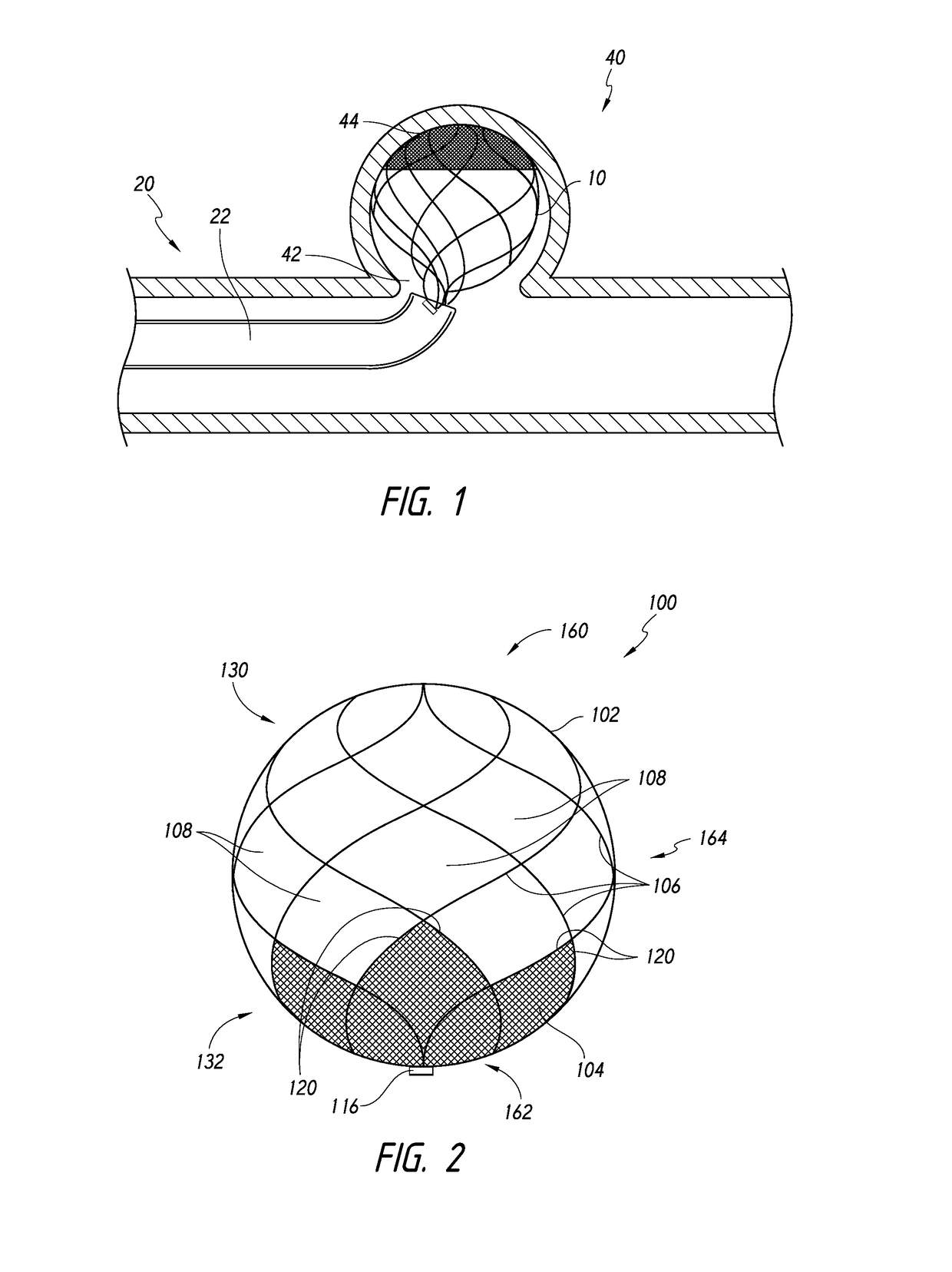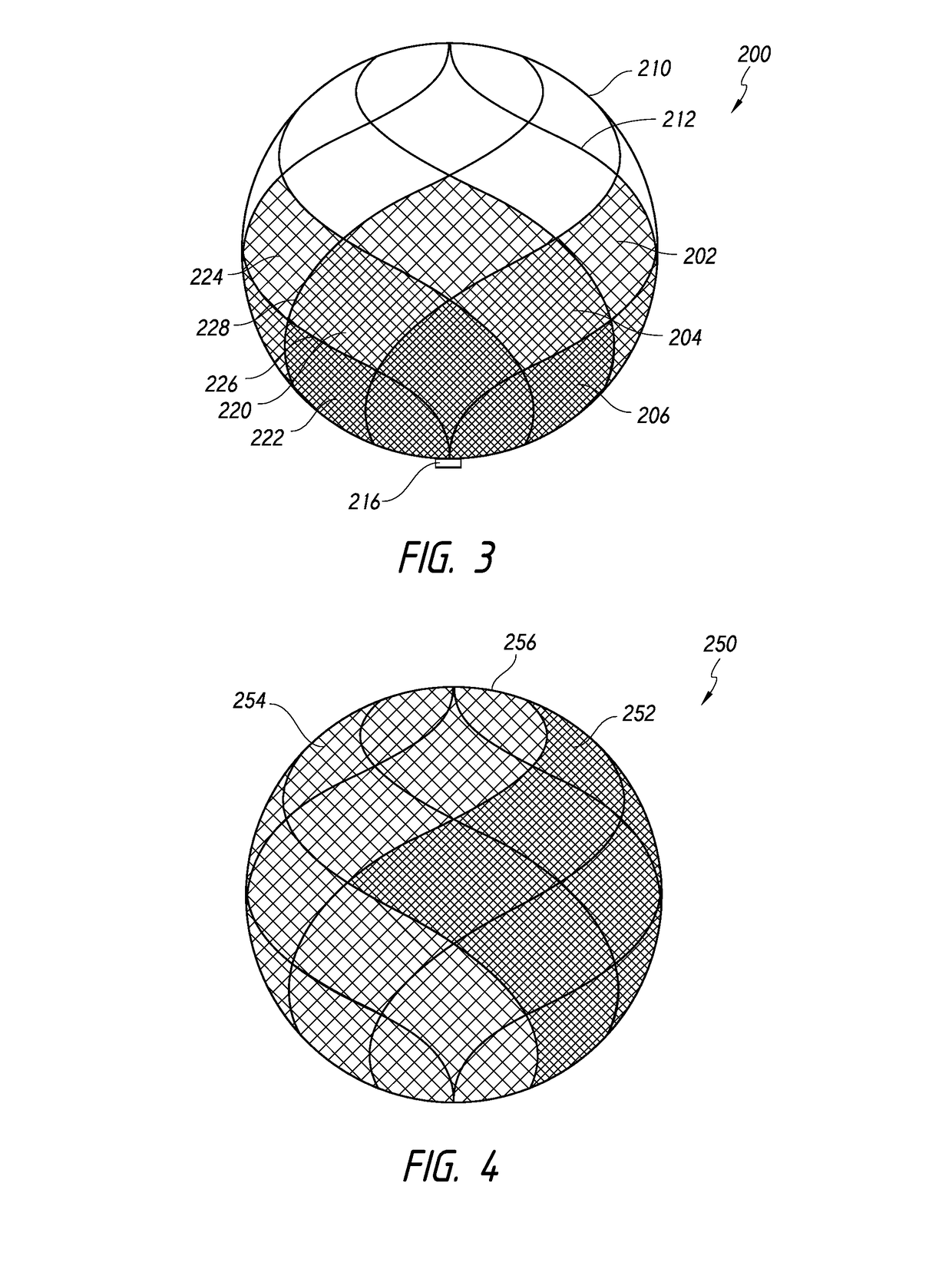Occlusive devices
a technology of occlusive devices and medical implants, applied in the field of intrasaccular medical devices, can solve the problems of thin walls and prone to rupturing of aneurysms, and achieve the effects of promoting endothelialization, facilitating thrombosis, and high surface area coverag
- Summary
- Abstract
- Description
- Claims
- Application Information
AI Technical Summary
Benefits of technology
Problems solved by technology
Method used
Image
Examples
Embodiment Construction
[0074]In the following detailed description, numerous specific details are set forth to provide a full understanding of the subject technology. It should be understood that the subject technology may be practiced without some of these specific details. In other instances, well-known structures and techniques have not been shown in detail so as not to obscure the subject technology.
[0075]Referring now to the figures, FIG. 1 is a side cross-sectional view illustrating deployment of a device into an aneurysm, according to some embodiments. As shown, a device 10 can be advanced to a target aneurysm 40 using a device assembly 20. The device 10 can be advanced from a catheter 22 of the assembly 20 and through a neck 42 of the aneurysm 40 toward a fundus 44 of the aneurysm 40.
[0076]FIG. 2 illustrates an implantable device 100 that comprises a frame 102 and a mesh component 104. The mesh component 104 is coupled to filaments 106 that make up the frame 102. For example, the frame 102 can be ...
PUM
 Login to View More
Login to View More Abstract
Description
Claims
Application Information
 Login to View More
Login to View More - R&D
- Intellectual Property
- Life Sciences
- Materials
- Tech Scout
- Unparalleled Data Quality
- Higher Quality Content
- 60% Fewer Hallucinations
Browse by: Latest US Patents, China's latest patents, Technical Efficacy Thesaurus, Application Domain, Technology Topic, Popular Technical Reports.
© 2025 PatSnap. All rights reserved.Legal|Privacy policy|Modern Slavery Act Transparency Statement|Sitemap|About US| Contact US: help@patsnap.com



